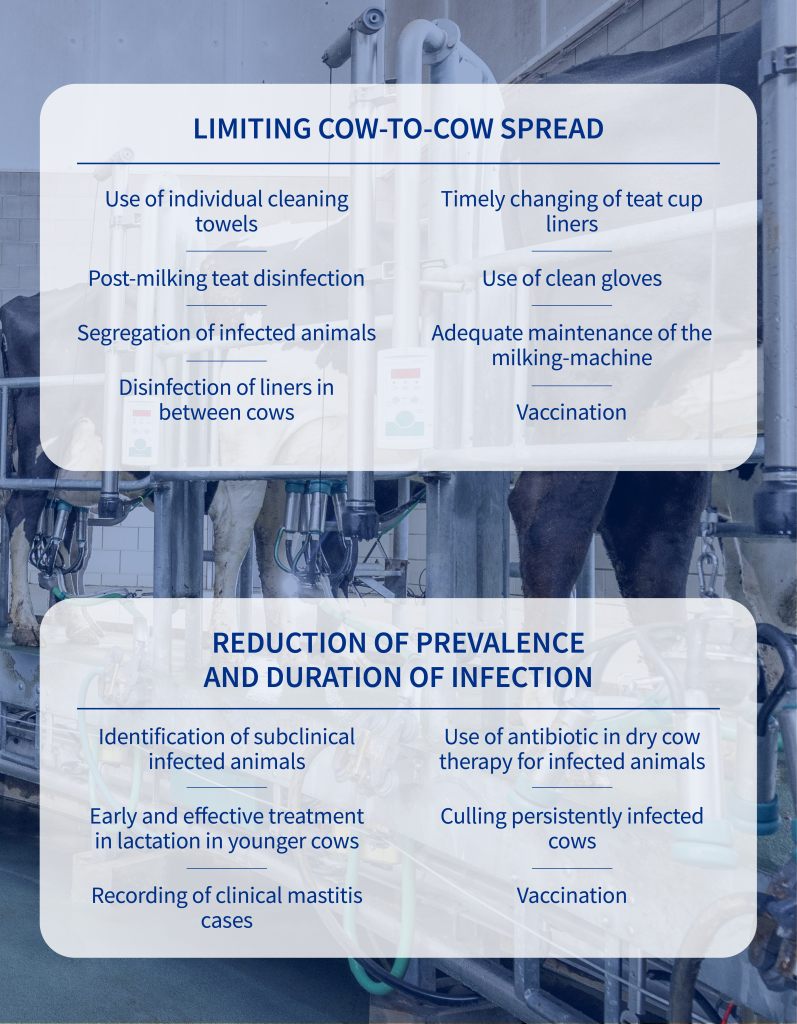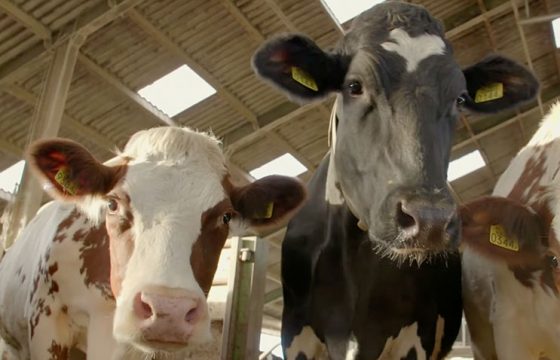Essential tips to put into practice for S. aureus mastitis prevention: The first step to control
How achievable is mastitis prevention?
There are 2 key points for prevention of S. aureus mastitis:
1) Limiting the spread between cows: reduction of the transmission rate and a low basic reproduction number (R0)
2) Reducing the prevalence of infected animals and duration of intramammary infections: minimizing excretion of the agent.
For each point, there are some specific actions that we can put into practice to achieve our goal:

Practices to limit the spread of the pathogen
“Biosecurity measures in the milking routine should be highlighted since the main transmission route is during milking”.
– The use of individual disposable or reusable sanitized towels is mandatory for wiping teats, along with the use of gloves that are regularly disinfected.
– In case of high prevalence of contagious infections, stimulation by forestriping the teats should be carefully done into a cup to avoid accidental transmission to healthy quarters or cows.
– Infected cows should be milked last or with a separate unit. The use of a sanitizing solution is recommended for teat cup liners such as a diluted solution of peracetic acid (0.5% to 1.5%).
– After milking, teat skin and the teat tip should be covered with an effective solution (chlorine dioxide, hydrogen peroxide, etc.) to eliminate bacteria that may invade the teat canal.

– Reduce the risk of hyperkeratosis by following a correct routine, adequate vacuum and pulsation settings, reducing overmilking to less than 45 seconds, timely changing of milk liners and proper milking-machine maintenance.
– Vaccines are a very interesting tool to complement the classical preventive measures. Vaccination protocols are targeted to reduce the transmission rate and reduce the duration of infection.
“Vaccines against mastitis have shown great results in reducing transmission and duration of infection”.
Practices for reducing prevalence and duration of infection
– Monitoring the bulk tank for the presence of S. aureus and early identification of infected animals contributes to achieve a reduced prevalence but rarely to an “S. aureus-free” state.
– Targeted, and prolonged treatment of younger infected animals is more effective than treating chronic or older cows.
– Data management both for clinical and subclinical cases assists in the decision-making process for treatment or culling of infected cows. Targeted dry cow therapy of infected or suspected animals is one of the most used strategies.
Conclusions
Effective udder health programs and control of contagious mastitis rely more on prevention measures rather than treatment.
Article written by Luis Pinho, DVM, PhD


